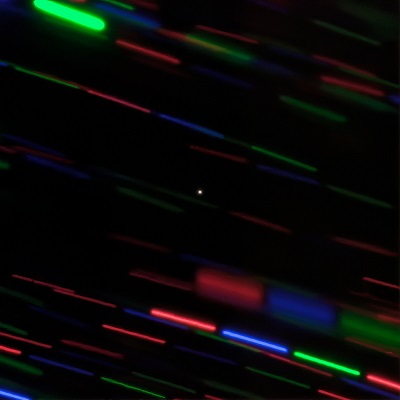Earth has a new companion: a mini-moon called 2020 CD3. On Feb. 15, scientists discovered a small rocky chunk that was captured by our planet’s gravity. But don’t get too excited, because it’s likely only a temporary fixture.
Our planet has only one natural satellite, our moon, but for the last couple of years, there’s been another lurking out in space. Astronomers spotted what is likely a carbonaceous asteroid with the help of the Catalina Sky Survey. The mini-moon is between 6.2 and 11.5-feet (1.9 to 3.5-m) in diameter, and roughly the size of a car.
Typically, temporarily captured objects, like 2020 CD3, only hang around for a brief time (from a few months to a year or two) before they are flung back out into space, or in some cases, burn up in our planet’s atmosphere as they’re pulled in by Earth’s gravitational tug. But according to astronomer’s, it’s been orbiting the Earth for up to three years now.
BIG NEWS (thread 1/3). Earth has a new temporarily captured object/Possible mini-moon called 2020 CD3. On the night of Feb. 15, my Catalina Sky Survey teammate Teddy Pruyne and I found a 20th magnitude object. Here are the discovery images. pic.twitter.com/zLkXyGAkZl
— Kacper Wierzchos (@WierzchosKacper) February 26, 2020
The celestial real estate encircling the Earth is pretty crowded, which is probably why we’ve just now noticed it. Asteroids — which are piles of planetary rubble, remnants left over from the birth of the solar system — are usually very small and dark, making them difficult to spot.
So, discovering 2020 CD3 is kind of a big deal. To date, there have been only a handful of proposed potential mini-moons with only one confirmed — an asteroid named 2006 RH120. The three-foot-wide space rock orbited the Earth for just over a year, from 2006-2007.
“Out of 1 million known asteroids, this is just the second asteroid known to orbit Earth,” Kacper Wierzchos, the astronomer who detected the object, said on Twitter.
The existence of 2020 CD3 is an exciting discovery for a number of reasons, including providing the chance to study asteroids up close. Most asteroids orbit between Mars and Jupiter, in the main asteroid belt and it takes sending a spacecraft out into the solar system to study one of these celestial objects in detail.

2020 CD3 could provide astronomers with the chance to study asteroids in detail and better understand how they’re captured by planets. Unfortunately, computer simulations indicate that the mini-moon could be back on a journey around the sun as early as April. That’s because it’s caught in a game of tug-of-war between the Earth and the moon.
Analysis of 2020 CD3’s orbital motion indicates it’s heavy for its size, which leads astronomers to believe it is in fact, an asteroid. But scientists will use the next few weeks to continue studying the enigmatic object in order to definitively determine whether it is indeed an asteroid or perhaps a rogue piece of space junk.
There’s no time to plan a mission to 2020 CD3, as the object is already growing fainter and fainter in images, but astronomers say it will likely be back in a few decades. With more advanced telescopes coming online in the near future, these types of sightings could become more and more common.
The post Meet Earth’s newly-discovered companion, a mini-moon named 2020 CD3 appeared first on TESLARATI.
